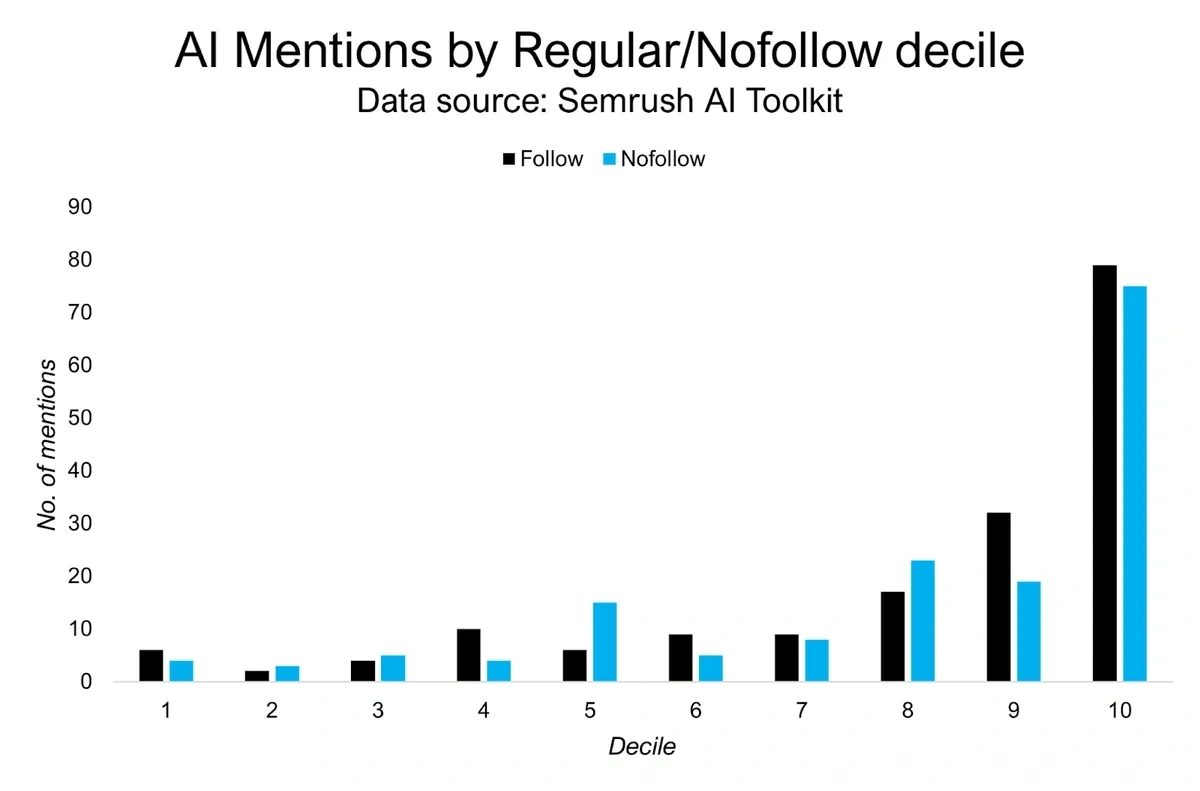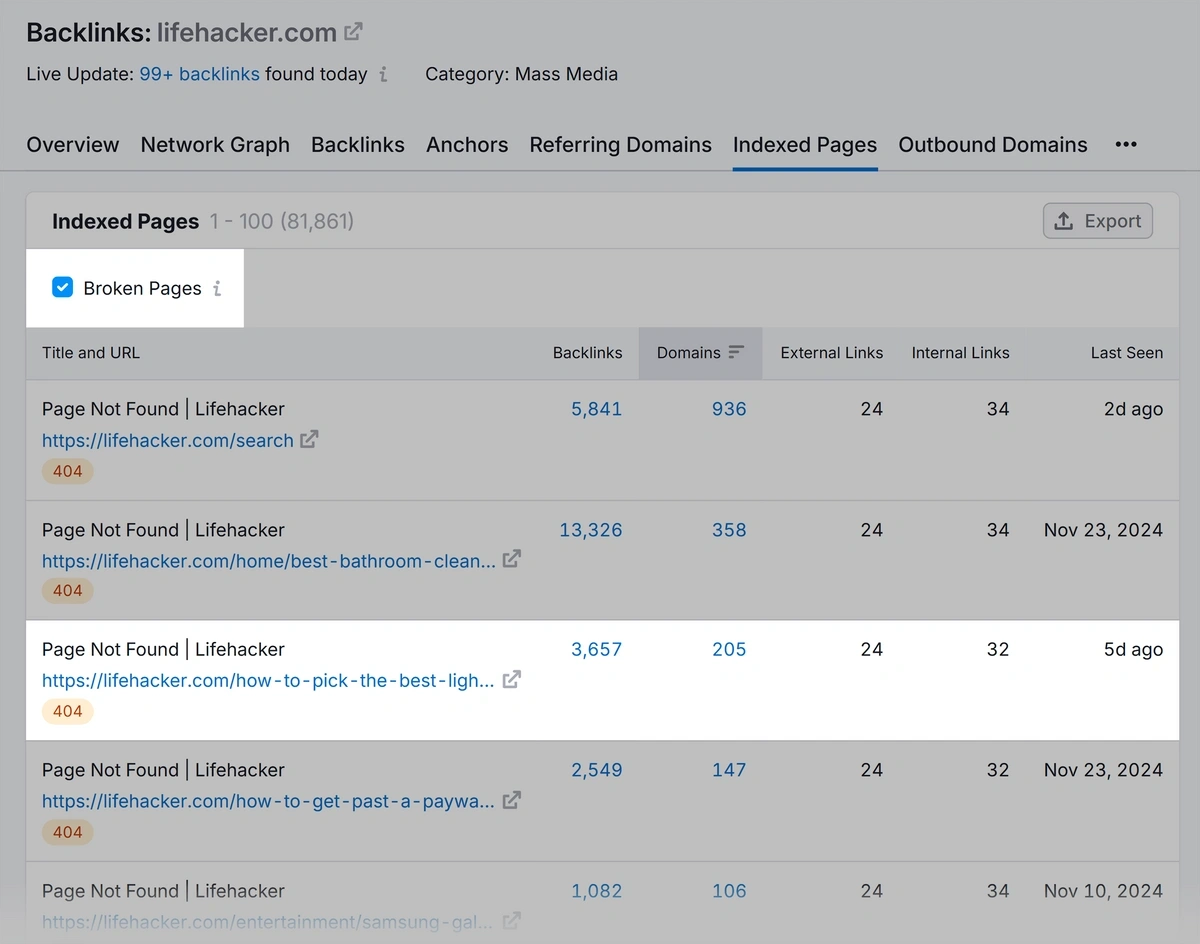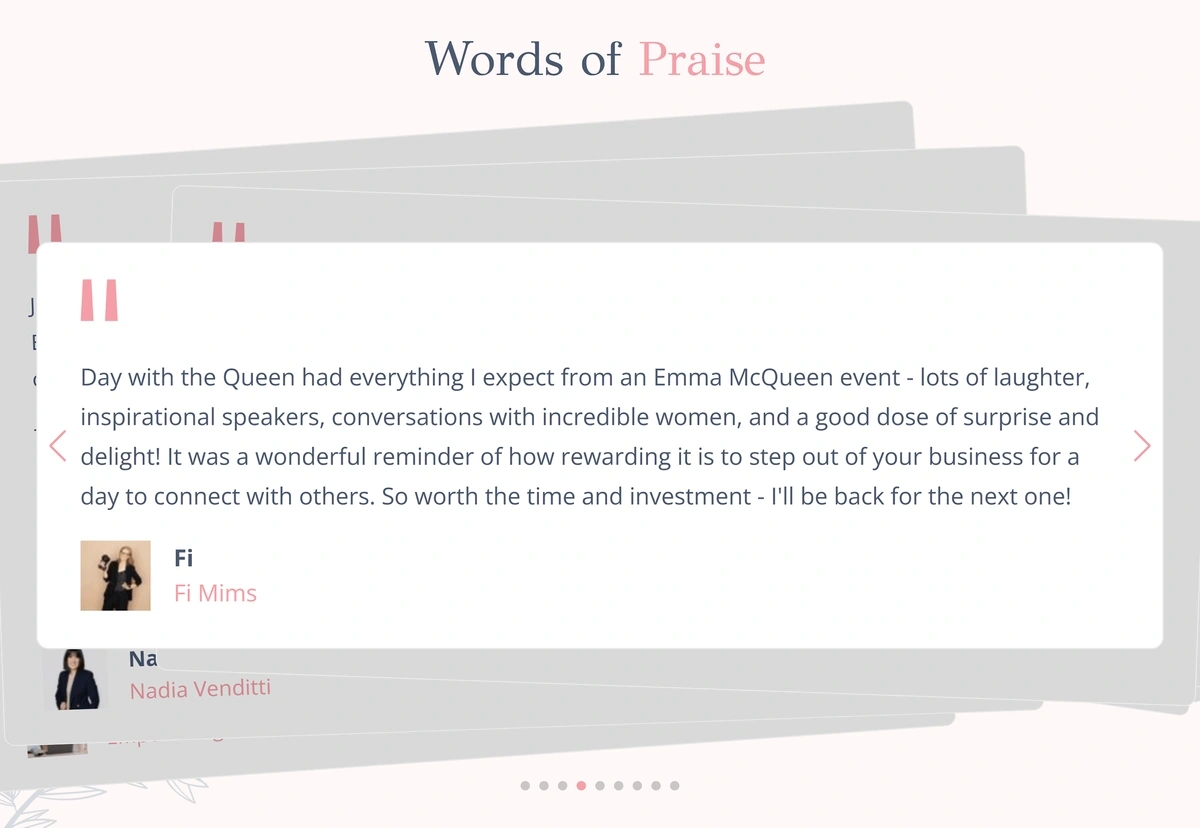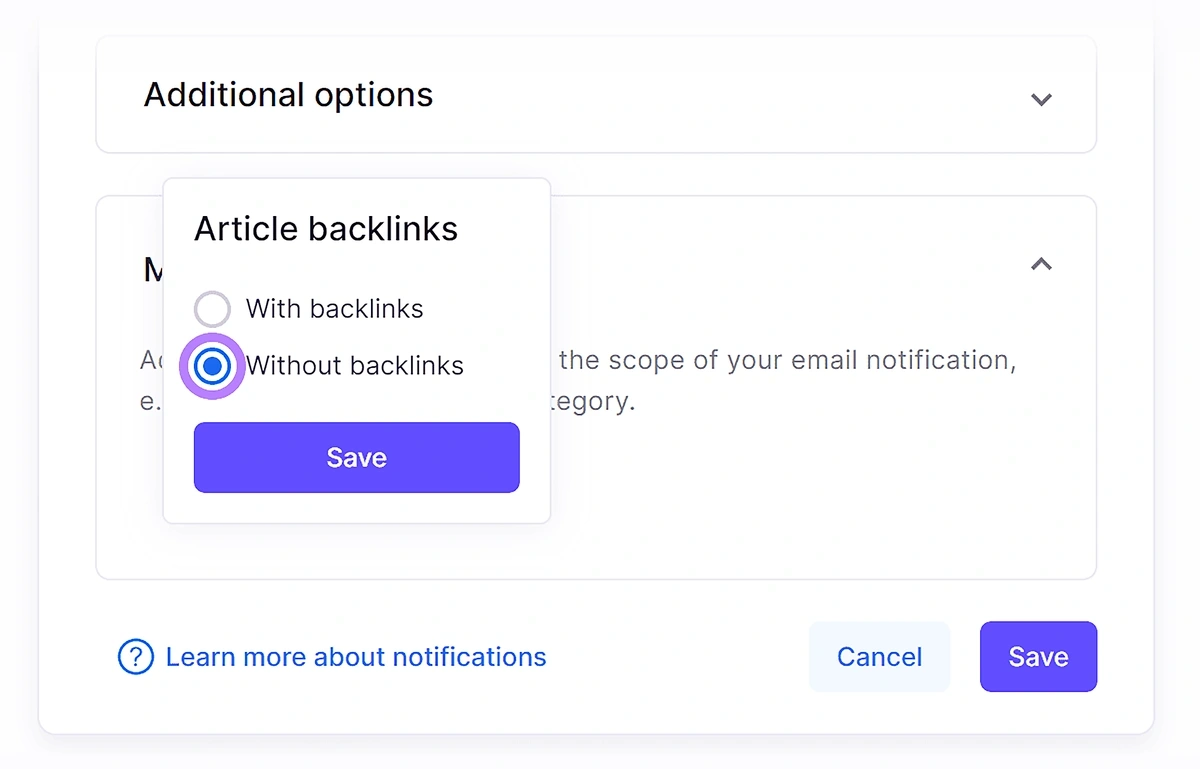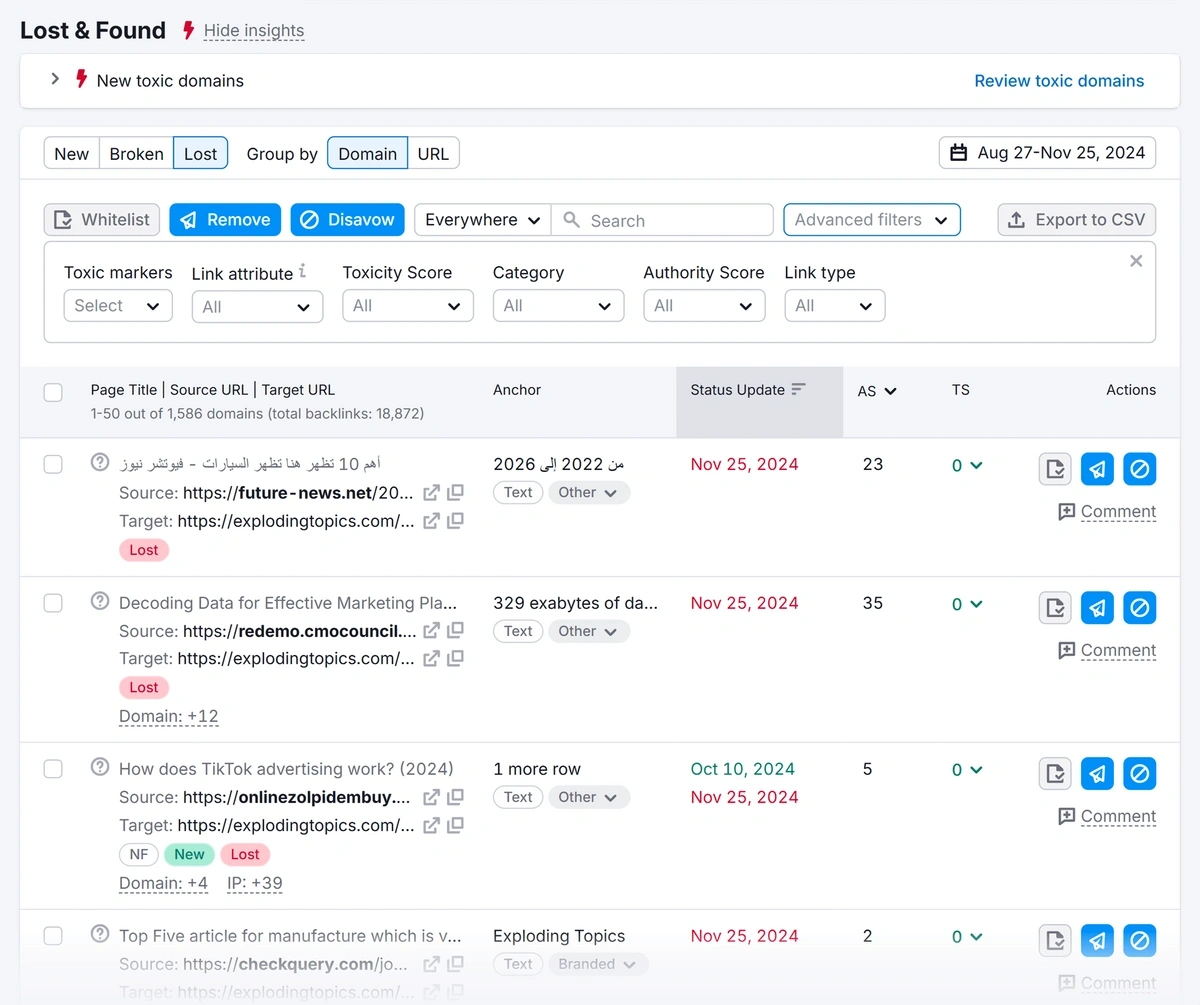
How to Get Backlinks: 10 Trusted Methods
Backlinks act as endorsements from other websites. They tell search engines your site is helpful, authoritative, and trustworthy.
And backlinks have taken on a new role in AI visibility, too. Kevin Indig referred to them as "credit scores" for sites.
But it's important to focus on quality over quantity when building backlinks, no matter why you're doing it.
In this article, we’ll explore 10 effective link building techniques that will help you to get more backlinks.
Want to Beat Your Competition?
Find out who’s linking to them and build a better backlink strategy.
Followed vs Nofollowed Backlinks in 2025
In testing, 85% of mentions in AI search engines came from third-party sites.
And when we think about "traditional SEO" primarily aimed at improving Google rankings, followed links had more weight than unfollowed links.
There are signs that this is changing.
Kevin Indig analyzed 1,000 domains with the Semrush AI Visibility Toolkit.
He found that, in terms of AI mentions, there was really no difference between followed and nofollowed links. They both influence the number of mentions you get.
This is good news if you want to know how to get more backlinks. It's much easier to get nofollowed links, and it could improve your visibility in AI search engines.
However:
- It's risky to rely on nofollowed links if your focus is on getting as many links as possible. Instead, look at ways to get backlinks that are relevant on high-quality sites.
- Keep in mind that Google doesn't give nofollowed links as much weight as followed ones. While it used to ignore nofollow links completely, it now treats them as "hints", but they still won't contribute meaningfully to organic rankings.
Now let's look at how to actually get those backlinks.
1. Get Backlinks From Resource Pages
Resource pages are curated collections of tools, guides, and reference documents.
These pages often appear on educational websites, professional associations, and industry blogs.
When they link to your site, you gain both referral traffic and a boost to your authority in Google.
For example, flutist Brenna Wiinanen has a page sharing 10 resources for fellow flute players. Each heading contains a link readers can click to visit the relevant page.
You can use the Semrush Backlink Analytics to find resource pages that link to your competitors.
If your content is just as good (or better), they’d likely be happy to link to your site too.
To try it, type a competitor’s domain in the tool and click “Analyze.”
Select the “Backlinks” tab and scroll down to view a list of websites linking to that competitor site.
To see only resource page links, filter by terms like:
- Resource
- Recommended
- Useful
- Links
- Tools
- Partners
- Blogs.
Then click Search.
When you contact the site, share a specific page from your site. Explain why it’d be valuable to their readers.
With a good pitch, they might agree to update their resource page with a link to your suggested content.
Want to Spy on Your Competition?
Explore competitors’ website traffic stats, discover growth points, and expand your market share.
2. Replace Broken Links with Links to Your Site
Broken link building is the practice of finding content with links that don’t work.
You can try persuading those sites to replace the broken links with an active link to your site.
This is a win-win: you helped them fix a link, and they help you with a backlink.
Let’s say a food-focused website added a link to a recipe on Jennifer Segal’s site, Once Upon a Chef. And that recipe was later deleted or moved to a different URL.
Now, when you click the link, you’ll see this 404 error page:
If you run a recipe blog, you could reach out and ask the site to link to a relevant recipe on your blog instead.
You can easily discover broken links in Backlink Analytics.
Just like last time, enter one of your competitor’s domains and click “Analyze.”
Click the “Indexed Pages” tab, then check the box next to “Broken Pages”.
Look for topics you also cover on your site.
For instance, if you have a post about picking the best light bulbs, it could be a good substitute for this article from Lifehacker:
The number in the “Backlinks” column tells you how many backlinks that page has. Click it to view all relevant backlinks and their source pages.
Next, click the “Page AS” column to sort the source pages by Authority Score.
Authority Score is a Semrush metric that evaluates a page’s quality. The higher the score, the better.
From this list, you can compile a list of websites you want to reach out to. Suggest they replace the broken link with a link to your page.
For the maximum chance of success, make it super easy for the site to find the link. Include:
- The page the link is on
- The anchor text.
Backlink Analytics gives you this information right in the table:
3. Create Skyscraper Content
Skyscraper content is comprehensive, original, and visually appealing content.
Among all other search results, skyscraper content is the stuff that stands out as being the best.
Creating this type of content makes it easy to convince websites to swap an existing link with yours.
But skyscraper content takes a long time to create.
Focus on topics that other websites are already getting many backlinks for. You’ll be more likely to get backlinks if the topics you invest time in are already popular.
Get More Search Traffic
Use trending keywords to create content your audience craves.
The good news is that Backlink Analytics makes it easy to find skyscraper content.
Again, enter a competitor’s domain, and click “Analyze.”
Head to the “Indexed Pages” tab for a list of that domain’s indexed pages.
The list includes the number of backlinks to each page. You can easily find pages with a lot of backlinks here.
These are the topics you’ll want to invest time and money in.
Click the number in the “Backlinks” column that corresponds to the competing page.
It shows the domains that link to the competing page.
Choose the sites you want to approach for a backlink. Then, reach out to their webmasters with your link.
Explain what makes your content better or more comprehensive. Suggest that the website link to your content instead.
4. Perform a Backlink Gap Analysis
A backlink gap analysis lets you find websites that link to your competitors’s sites but not yours.
This helps you to identify any “gaps” you should address.
The Semrush Backlink Gap tool can help you do this.
Open the tool, then enter your domain in the first field. Below that, add at least one competitor’s domain (you can add up to four competitors).
Click “Find prospects.”
You’ll get a list of websites linking to your competitor(s), but not to you.
The numbers in a competing domain’s column show the total number of backlinks they got from each website in the list.
Click any number to check which pages on the referring domain link to your competitor(s).
When you discover websites you want to get links from, tick the checkboxes next to them and click “Start outreach.”
The window that appears next lets you send the selected websites over to the Link Building Toolkit.
The Semrush Link Building Toolkit is a powerful platform that helps you to get backlinks without spending a ton of time on manual outreach.
You can email prospects directly from this tool and manage all of your link building activity in one place.
5. Create Linkable Assets
Linkable assets are highly valuable pieces of content that naturally attract backlinks, like:
- Comprehensive guides
- Research studies and surveys
- Infographics
- Free tools (calculators, trackers, converters, etc.)
Creating and promoting a free resource or tool is one of the most effective link building tactics for SEO. Pages like this attract followed links.
As an example, Semrush produced an AI Visibility Index report.
This is a great example of a valuable asset that other sites will link to:
- It's well-presented, with attractive layout and navigation
- It offers a huge number of insights that its target customers will be interested in
- It's an example of high-effort content that is difficult to copy
To get more backlinks, we've also published our own original research on Exploding Topics.
One example is the AI trust gap research we published, which earned us 147 backlinks.
This single page has:
- 106 followed links from sites like Inc, SEO Round Table, and SEOFomo
- 41 followed links from sites like Search Engine Land, Clickup, and Martech
Of course, it’s great when websites voluntarily link to lead magnets or linkable assets. But you’ll get better results if you promote the asset. To do this, you can:
- Use SEO best practices to increase organic traffic
- Share the linkable assets on your social media platforms
- Run paid ads to quickly drive qualified traffic to your linkable assets
Then use a backlink checker to keep an eye on the sites that are linking to you.
We explained more about this process in our AI visibility guide.
6. Provide Testimonials
Providing testimonials about products or services in your niche can help you gain valuable backlinks.
Let’s say you write a review for a service you’ve enjoyed. The brand agrees to publish your review on its website. It may also add a backlink to your site when attributing the testimonial to you.
This example shows how business coach Emma McQueen links to clients’ sites from the featured testimonials:
Writing reviews works well if you’re on good terms with the brand already. You can just ask for a link.
But even if you don’t know anyone, create a testimonial and publish it on your site. Then, send a message to let them know.
The business may promote your testimonial on their website and link to it.
That’s what Pedaling Innovations did when they got a good review from Pinbike:
7. Gain Links from Partners and Suppliers
Tapping into existing business relationships is a great way to get backlinks.
Here are some ideas for using this technique:
- Write guest posts for your partners’ websites. These posts should credit you as the author and contain a link to your site.
- Provide testimonials for your partners’ products or services. Request that they publish these testimonials with a backlink.
- Ask your partners to include you on their partner page. Ask that they include a link back to you on that page.
For instance, check out this partner page from Family Brands:
Each partner logo is a clickable link leading to the respective partner’s website.
What if you don’t have any partnerships like this yet?
Use the Semrush Link Building Toolkit to identify prospects to build relationships with—and seek backlinks from when the time is right.
Enter your domain name and click “Start Link Building.”
Enter your domain again and give your link-building project an optional name. And hit the “Create project” button when you’re ready.
Enter up to 10 keywords you want higher search rankings for, based on your keyword research.
Select your target country, and add up to 10 competing domains you want to outrank.
Then, click “Start Link Building.”
When the tool has finished running, click “View prospects.”
The “Prospects” page will load with a list of suggested websites to get backlinks from.
Backlinks from websites with a 4/5 or 5/5 rating in the “Rating” column may be especially valuable. So, consider contacting them about forming a relationship first.
Tick the checkboxes for your target websites. Then, click the “To In Progress” button at the top of the list to add the websites to your prospects list.
Click the “In Progress” tab to view your chosen prospects.
From here, start a conversation using the contact information the tool provides.
Just make sure you’ve spent time putting together an actual partnership proposal. You can try:
- Providing a 10% discount to mutual customers
- Contributing some content. For example, you might write one blog post each month.
Once you’re on friendly terms, raise the idea of having them link to your website.
8. Respond to Quote Requests
You can showcase your expertise by responding to journalists’ and bloggers’ requests for quotes.
These writers may link to your website when attributing the quote to you.
Here’s how psychologist and author Harriet Lerner got a backlink to her website when TODAY.com quoted her in an article:
The original platform, Help a Reporter Out (later known as Connectively), has now closed down. But there are plenty of HARO alternatives.
These sites are used by journalists writing for huge publications like Forbes.
To build backlinks by helping journalists, sign up to:
On all of these platforms, you’ll see requests from journalists. You can review the publication and response deadline, and then submit a pitch if you think you’re a good fit.
If the writer includes your quote in their article, they may link to your website when crediting you.
You may even be able to form relationships with journalists so you can reach out to them directly in the future.
9. Identify Unlinked Mentions
Unlinked mentions are when websites talk about your brand without providing a link to your website. And they can easily turn into backlinks if you know where they are.
For instance, Backlinko could reach out to Medium about updating its brand mention to include a link.
And that might be worth doing. Medium receives over 120 million visits every month.
How do you find unlinked mentions?
With the Brand Monitoring app from the Semrush App Center.
It alerts you of new unlinked brand mentions so you can reach out to request backlinks.
Sign up for the tool and click the “Get started” button once you have access.
Then, select “Brand.” A “Create brand query” window will appear.
Follow the prompts to configure the tool. Then, click “Create query.”
The tool will list your brand mentions over the past 30 days and from now on.
Click “Mention details” and select the circle next to “Without backlinks” to view only your unlinked mentions.
Click any unlinked mention on the right to view it on the original page.
You can then contact the webmaster and ask them to turn the unlinked mention into a backlink.
To get email alerts of new unlinked mentions, click the “Email notifications” tab at the top. Then, hit the “Set up email notifications” button.
Select your preferred alert frequency (daily, weekly, when you get a new mention, when there’s an unusual spike, etc.). And provide any other necessary details.
To be alerted about unlinked mentions, go to “More filters” > “Add filter” > “Article backlinks” and select the circle next to “Without backlinks.” And click “Save.”
Finally, click “Save” at the bottom of the window.
Now, you’ll get regular email alerts about your brand’s unlinked mentions.
10. Reclaim Lost Links
Getting new sites to link to you isn’t the only way to improve your backlinks profile. You can also do it by recouping backlinks you’ve lost over time.
Monitor your website’s backlink profile using the Semrush Backlink Audit tool. You’ll know if you’ve lost any backlinks and can reach out to have them reinstated.
Enter your website’s domain and an optional project name. Then, click “Create project.”
Select the scope of your audit and follow the Backlink Audit configuration steps to customize your settings.
After that, click “Start Backlink Audit” to run the tool.
When the backlink audit is complete, click the “Lost & Found” tab.
Scroll down the “Lost & Found” table and click the “Lost” tab to see which domains you lost backlinks from in the last three months. As well as the intended pages on your site and the date you lost the backlinks.
Consider prioritizing lost backlinks from websites with higher Authority Scores. Because backlinks from these websites have a higher potential to improve your site’s rankings.
Then, contact webmasters. Ask why they’ve removed the link and work with them to restore it—if possible.
For example, a webmaster may have removed a link because it points to outdated information.
If so, provide them with a link to the latest content on your site. They may be happy to add a link to the new resource.
Bonus Tip: How to Know When Backlinks Are Worth Getting
I use the Semrush Link Building Tool to assess whether links are worth getting or not. The Link Building Tool shows me:
- What backlinks I already have
- What the authority score is for each link opportunity
- What type of sites could link to me
For SEO and GEO, it's vital to look at the "AS" column.
In Kevin Indig's research, he found that Authority Score was the strongest signal connected to brand mentions in LLMs, with the correlation in ChatGPT being particularly strong.
ChatGPT has the most users, so this could be a boost as AI search becomes more popular.
To capitalize on this, you'll want to look at your own Authority Score and the AS for the backlink opportunities. This could help you to get get more ChatGPT mentions because you'll be funneling those quality signals from great websites through to yours.
Try Semrush Free and Work On Getting More Backlinks Today
With these Semrush SEO tools, you can discover high-authority resource pages, identify broken link opportunities, analyze your competitors' backlink gaps, and monitor valuable unlinked mentions - all from one platform.
Start building a powerful backlink profile that boosts your search rankings and drives organic traffic. Try all of Semrush's advanced backlink tools for free and put these 10 proven link-building methods into action.
Stop Guessing, Start Growing 🚀
Use real-time topic data to create content that resonates and brings results.
Exploding Topics is owned by Semrush. Our mission is to provide accurate data and expert insights on emerging trends. Unless otherwise noted, this page’s content was written by either an employee or a paid contractor of Semrush Inc.
Share
Newsletter Signup
By clicking “Subscribe” you agree to Semrush Privacy Policy and consent to Semrush using your contact data for newsletter purposes
Written By


Claire Broadley is the Lead Editor and AI Content Strategist at Exploding Topics, where she oversees editorial workflows, AI SEO s... Read more

